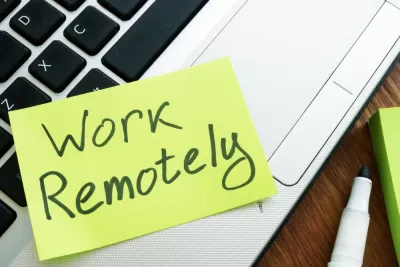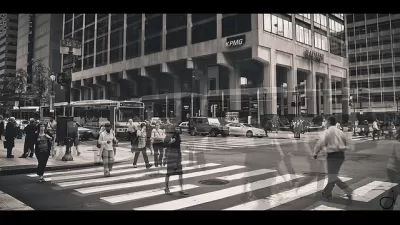Remote work increased threefold during the pandemic, but the numbers vary significantly from city to city and region to region. Almost half of D.C.-area employees, for example, worked from home in 2021, according to American Community Survey data.

Recently released data from the Census Bureau’s 2021 American Community Survey paints a more complete picture of the work from home trends upending commutes, lifestyles, and neighborhoods around the United States.
While remote work tripled between 2019 and 2021—to nearly 18 percent of all workers around the United States—the percentages varied widely by city and metropolitan region, according to an article by Tara Bahrampour for the Washington Post. In Washington, D.C., for instance, 48.3 percent of employees worked remotely in 2021—the highest percentage for any city in the country—followed by Seattle (46.8 percent), San Francisco (45.6 percent), Austin (38.8 percent), and Atlanta (38.7 percent).
The order shifts when considering metropolitan areas. When expanding beyond specific city limits, San Francisco (35.1 percent) and San Jose (34.8 percent) led this list, followed by D.C. (33.1 percent).
William Frey, a demographer with the Brookings Institution, is cited it he article explaining that work from home rates correlates strongly with the number of college-educated workers.
A lot more demographic data related to work from home and other trends, such as childhood poverty, are included in the source article below.
FULL STORY: D.C. was the top city for remote work in 2021, census data show

Trump Administration Could Effectively End Housing Voucher Program
Federal officials are eyeing major cuts to the Section 8 program that helps millions of low-income households pay rent.

Planetizen Federal Action Tracker
A weekly monitor of how Trump’s orders and actions are impacting planners and planning in America.

Ken Jennings Launches Transit Web Series
The Jeopardy champ wants you to ride public transit.

Washington Legislature Passes Rent Increase Cap
A bill that caps rent increases at 7 percent plus inflation is headed to the governor’s desk.

From Planning to Action: How LA County Is Rethinking Climate Resilience
Chief Sustainability Officer Rita Kampalath outlines the County’s shift from planning to implementation in its climate resilience efforts, emphasizing cross-departmental coordination, updated recovery strategies, and the need for flexible funding.

New Mexico Aging Department Commits to Helping Seniors Age ‘In Place’ and ‘Autonomously’ in New Draft Plan
As New Mexico’s population of seniors continues to grow, the state’s aging department is proposing expanded initiatives to help seniors maintain their autonomy while also supporting family caregivers.
Urban Design for Planners 1: Software Tools
This six-course series explores essential urban design concepts using open source software and equips planners with the tools they need to participate fully in the urban design process.
Planning for Universal Design
Learn the tools for implementing Universal Design in planning regulations.
Heyer Gruel & Associates PA
Ada County Highway District
Institute for Housing and Urban Development Studies (IHS)
City of Grandview
Harvard GSD Executive Education
Toledo-Lucas County Plan Commissions
Salt Lake City
NYU Wagner Graduate School of Public Service





























